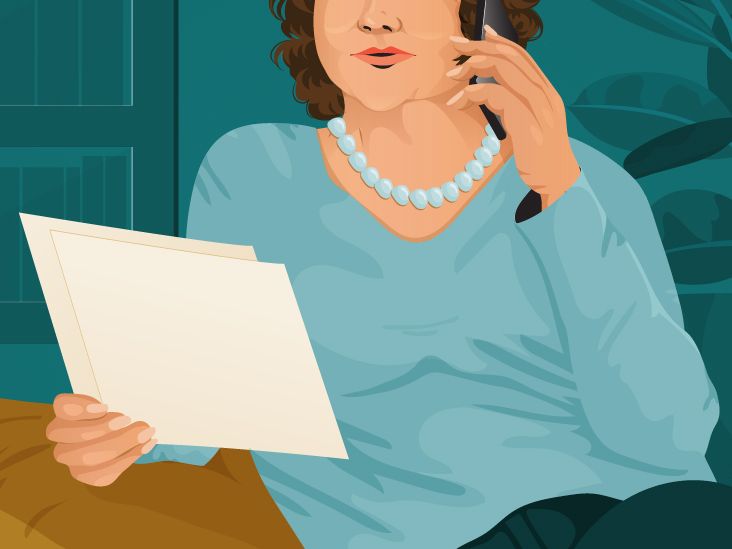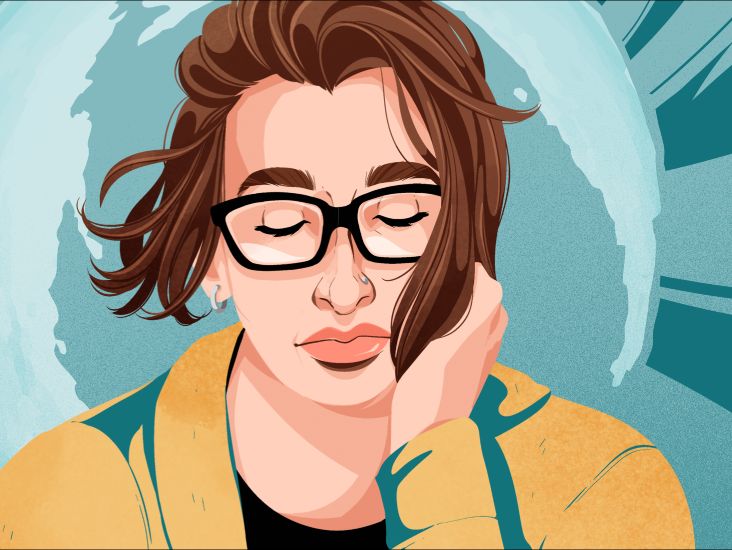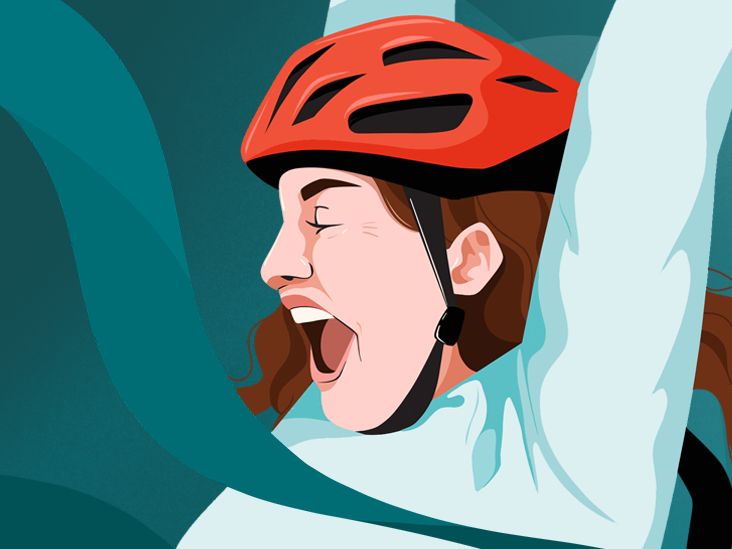
It was 4:30 in the morning when I started to consider going to the hospital.
I was sitting in the dark in an Epsom salt bath, watching the glow of a single candle flame. I was battling sleep deprivation, and I was in near-constant excruciating pain.
I had lesions on my skin — I counted more than 25 — some of which had become so unbearably painful that I was no longer able to sleep.
I laughed deliriously at how I’d found myself in this situation, sitting in a tub of water all night as my only respite from pain — clinging to the one thought that gave me solace:
This. Is. Temporary.
My condition was due to a horrible case of monkeypox, which in June of 2022 was a newly rising virus in the United States — one that would soon become a headline magnet.
At that time, monkeypox was mostly affecting men who have sex with men. In addition to the flu-like symptoms, its telltale sign was painful, fluid-filled lesions that could appear anywhere but seemed to take a liking to the most sensitive areas of one’s body.
From exposure to diagnosis
I found out that I had been exposed to monkeypox, or MPX, on June 17, when I received a call from a friend I’d been with 1 week prior. He informed me that he (and the Los Angeles Department of Public Health) were 99% sure that he had MPX. And because we’d had skin-to-skin contact during the transmission window, I might have it, too.
After the call, I gave myself a skin examination and, sure enough, I noticed a few lesions forming. Between that and the recent fatigue, cough, and sore throat I’d come down with, it was immediately apparent that I had MPX.
I had a telehealth visit with my medical provider the next day, and I got in touch with the L.A. Department of Public Health. This led to an appointment for a culture swab test 2 days later.
Walking into my provider’s exam room, I felt a bit like E.T. — there was so much PPE. My provider actually apologized and told me that the precautions were due to protocol. They swabbed one lesion on my body and one of the newly-formed ones on my face, and that was it.
I found out 4 days later that my test was positive, as everyone involved had already assumed.
A slow road to recovery
In the days after I was notified of my exposure, my flu-like symptoms became intense. I had a cough, a sore throat, a fever, full-body chills, and swollen lymph nodes — plus I was sweating through my sheets and pillows at night. The lesions on my body grew larger, and new ones appeared on my face.
By the time I received the positive test result, the flu-like symptoms had abated, but more lesions were appearing everywhere. They were popping up on my feet, legs, arms, hands, shoulders, torso, and even on my scalp.
When they became so painful that I wasn’t able to sleep, I went back to my doctor and was prescribed narcotic painkillers. That helped just enough for me to be able to sleep again, but even the 50 mg of Tramadol wasn’t enough to provide complete relief.
Eventually, the pain receded as the lesions burst, scabbed over, and fell off.
It was a long, solo, painful journey.
A MPX patient isn’t considered fully recovered until every sore’s scab has fallen off and revealed fresh, smooth skin underneath. It was incredibly frustrating near the end when a new pox would appear since I knew that it would only delay my recovery that much longer.
But I finally reached that point and was cleared on July 12, a full 3 weeks and 3 days after I first noticed symptoms.
From virus to viral
Among the tens of thousands of confirmed MPX cases worldwide — and the more than 20,000 cases in the U.S. — mine was unique in how public it quickly became.
I was originally on the fence about whether to publicly acknowledge my early case of MPX, fearing embarrassment and struggling with my own sense of shame. But on June 23, I decided to tweet about it.
It was the day that the Jynneos MPX vaccine dropped without notice in New York and Los Angeles. I watched friends tweeting about trying (mostly unsuccessfully) to get the vaccine, and I figured that speaking up about my experience would be helpful.
My tweet went viral.
Reporters began reaching out, and I was receiving well wishes from the likes of Patricia Arquette.
I could see in the replies that people were beginning to take MPX’s presence in the U.S. seriously. So 3 days later, I posted a TikTok discussing the outbreak and my own experience with it. That post also went viral, initially gaining a few hundred thousand views and later surging to over 1.5 million.
Soon, I was getting interview and first-person essay requests from major media outlets, both nationally and locally in New York and Los Angeles. I appeared on CNN, ABC, NBC, CBS, and many more stations. I also wrote for, or was reported on, in the New York Times, the LA Times, PEOPLE, SELF, BuzzFeed, and more. I even spoke on several podcasts.
In the span of a few weeks, I’d become one of the leading public faces of the MPX outbreak.
I was grateful that the majority of responses to my story were caring and kind, but there were still some trolls who had cruel things to say. After all, the internet is gonna internet.
It all still feels rather surreal.
Speaking out against stigma
The challenges of dealing with MPX, especially in the early days, were brutal. Many patients struggled to get diagnosed and find adequate care, facing severe lags in testing and encountering providers who weren’t educated on the new outbreak.
I was incredibly fortunate and privileged to have gotten the timely care that I did, and it still took me a week to get a positive test result.
I joined a growing number of queer men who were creating grassroots resources to help keep each other safe. I shared an info document on my website called “So You Got Monkeypox,” which contains some of the tips, remedies, and resources I learned about.
I also did my part to prevent community spread by isolating myself during my illness. Later, I spoke at protests, calling for a more comprehensive response from government and public health officials.
To get MPX is to have your life completely disrupted for upwards of a month. And not in the communal way people were isolating during COVID. It was a long, solo, painful journey.
The recovery time for MPX is 2 to 4 weeks, which is an incredibly long time to be under quarantine. It does a number on one’s mental health — I started to crack about 2.5 weeks in.
For those who can’t work from home, those weeks can be a financial nightmare. I saw multiple GoFundMe campaigns arise at the height of the outbreak.
For many people, MPX carries the potential for shame and stigma. The lesions themselves can be like a scarlet letter. It’s similar to how a lot of people were eager to classify MPX as an STI. It is, definitively, not an STI — although it’s being transmitted in a similar fashion in this specific outbreak.
I like to think that, by being outspoken, I (and others) helped to mitigate a bit of that. Nobody should experience stigma or shame for contracting this virus.
Lessons learned
It has been a wild ride, and I’ve learned a lot. But there are two lessons I’ve really meditated on since this entire experience.
The first is that most people are inherently empathetic and want what’s best for their fellow human beings.
The second is that there is immense power in vulnerability.
Speaking out to help others was a risk with a lot of potential for embarrassment. But I owned my situation and tried to use it to educate others, and the response was overwhelmingly kind and positive.
Most people watching from afar resonated with the experience of those of us who were speaking out, which helped push our government to move faster. It also pushed people to be more cautious and aware of how to protect themselves.
So please, if you’re in an at-risk demographic and haven’t yet been vaccinated: Make an appointment to go get your Jynneos shot as soon as possible.
Where to find the monkeypox vaccine
Enter your zip code into the Monkeypox Vaccine Locator to find healthcare locations in your area providing the Jynneos vaccine.
Vaccine supplies are limited and many states are prioritizing people who have recently been diagnosed or exposed — to help reduce symptom severity. But some locations are offering the vaccine to prevent MPX in people at high risk of exposure or serious illness.
Contact your local provider or
Matt Ford is an actor, writer, and video producer who splits his time between Los Angeles and New York. He was one of the first to speak publicly about having MPX and his story received national media attention.



